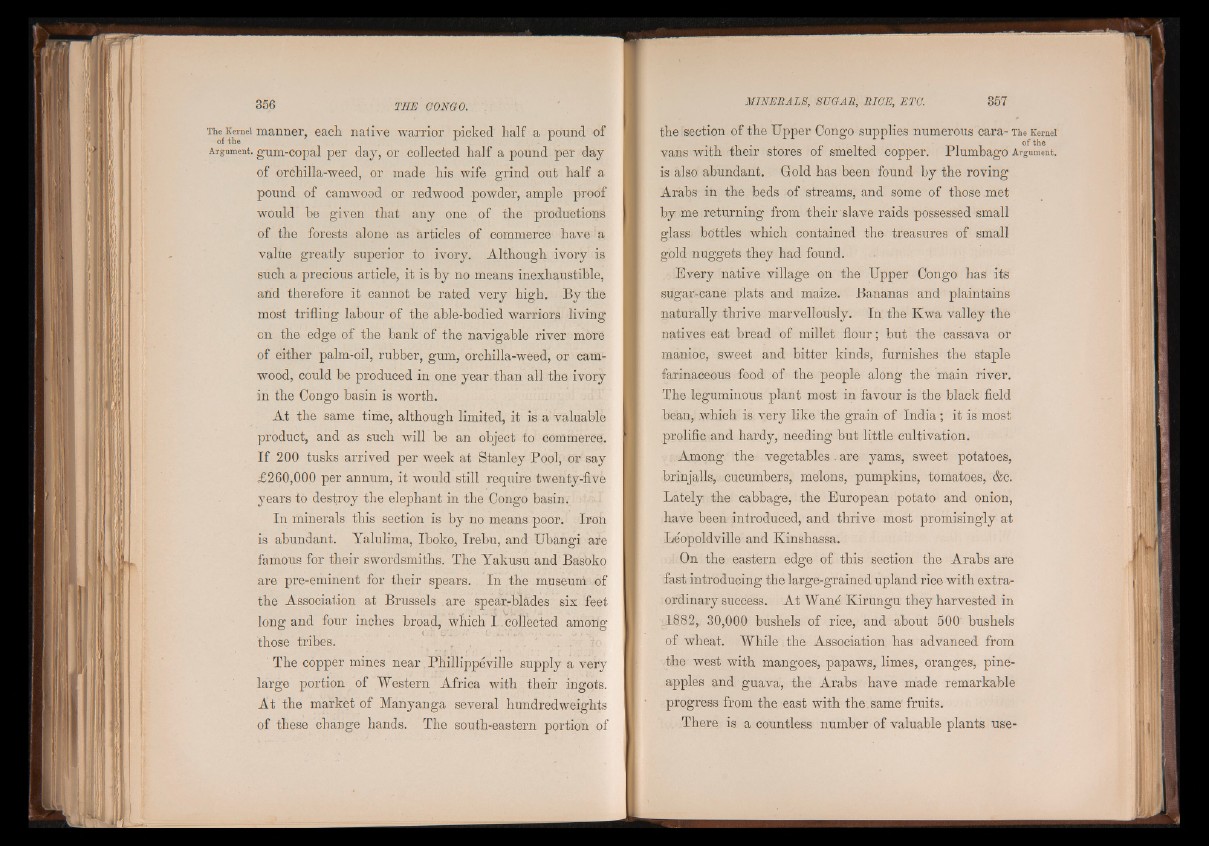
The Kernel manner, each native warrior picked half a pound of
Argument, gum-copal per day, or collected half a pound per day
of orchilla-weed, or made his wife grind out half a
pound of camwood or redwood powder, ample proof
would be given that any one of the productions
of the forests alone as articles of commerce have a
valtte greatly superior to ivory. Although ivory is
such a precious article, it is by no means inexhaustible,
arid therefore it cannot be rated very high. By the
most trifling labour of the able-bodied warriors living
on the edge of the hank of the navigable river more
of either palm-oil, rubber, gum, orchilla-weed, or camwood,
could be produced in one year than all the ivory
in the Congo basin is worth.
At the same time, although limited, it is a valuable
product, and as such will be an object to commerce.
If 200 tusks arrived per week at Stanley Pool, or say
£260,000 per annum, it would still require twenty-five
years to destroy the elephant in the Congo basin.
In minerals this section is by no means poor. Iron
is abundant. Yalulima, Iboko, Irebu, and Ubangi are
famous for their swordsmiths. The Yakusu and Basoko
are pre-eminent for their spears. In the museum of
the Association at Brussels are spear.-blades six feet
long and four inches broad, which I . collected among
those tribes.
The copper mines n ear. Phillippeville supply a very
large portion of Western Africa with their ingots.
At the market of Manyanga several hundredweights
of these change hands. The south-eastern portion of
the section of the Upper Congo supplies numerous cara- The Kernel
vans with their stores of smelted copper. Plumbago Argument,
is also abundant. Gold has been found by the roving
Arabs in the beds of streams, and some of those met
by me returning from their slave raids possessed small
glass bottles which contained the treasures of small
gold nuggets they had found.
Every native village on the Upper Congo has its
sugar-cane plats and maize. Bananas and plaintains
naturally thrive marvellously. In the Kwa valley the
natives eat bread of millet flour; but the cassava or
manioc, sweet and bitter kinds, furnishes the staple
farinaceous food of the people along the main river.
The leguminous, plant most in favour is the black field
bean, which is very like the grain of India ; it is most
prolific and hardy, needing but little cultivation.
I Among the vegetables. are yams, sweet potatoes,
brinjalls, cucumbers, melons, pumpkins, tomatoes, &c.
Lately the cabbage, the European potato and onion,
have been introduced, and thrive most promisingly at
Leopoldville and Kinshassa.
On the eastern edge of this section the Arabs are
fast introducing the large-grained upland rice with extraordinary
success. At Wane Kirungu they harvested in
1.882, 30,000 bushels of rice, and about 500 bushels
of wheat. While the Association has advanced from
the west with mangoes, papaws, limes, oranges, pineapples
and guava, the Arabs have made remarkable
progress from the east with the. same' fruits.
There is a countless number of valuable plants use